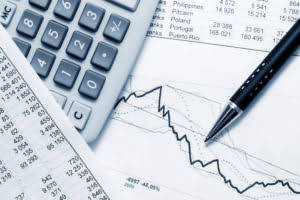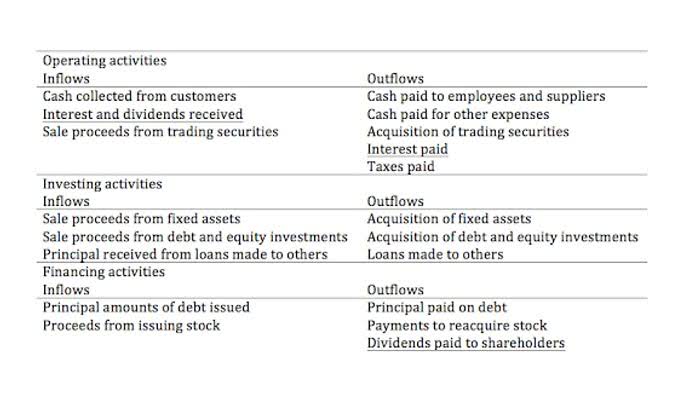

The type of budgeting software you choose will depend on such things as the scale of the project, the speed of the program, and the risk of error. CFI is the global institution behind the financial modeling and valuation analyst FMVA® Designation. CFI is on a mission to enable anyone to be a great financial analyst and have a great career path. In order to help you advance your career, CFI has compiled many resources to assist you along the path. Examples include purchasing new machinery, building facilities, acquiring vehicles, and upgrading technology. While CapEx is a useful indicator of business investment, it has limitations that investors and analysts must consider.

Challenges with Capital Expenditures
Capital expenditures are related to growing and improving the assets of a business. Operational expenditures (OpEx), on the other hand, are expenditures related to the day-to-day operation of a business. Below is a truncated portion of the company’s income statement and cash flow statement as of the company’s 10-Q report filed on June 30, 2020.
Example of Capital and Revenue Expenditures
- Capital cost refers to the one-time expenditure or investment made in assets that will provide benefit to a company, organization, or individual over multiple years.
- For example, according to a compilation from New York University’s Stern School of Business, homebuilding has a relatively high cost of capital compared to the retail grocery business lower cost.
- Typically, the purpose of CapEx is to expand a company’s ability to generate revenue and earnings.
- The interest rate is determined by factors such as the company’s creditworthiness and prevailing market conditions.
- In this blog post, we’ll dive into what capital costs are and how they affect businesses as well as explain some of the most common types of capital costs.
- This systematic expensing matches the asset’s cost with the revenue it helps generate over its useful life, providing a more accurate picture of a business’s profitability over time.
Capital expenditures are often used to undertake new projects or investments by a company. Typically, the purpose of CapEx is to expand a company’s ability to generate revenue and earnings. Conversely, revenue expenditures are the operational expenses for running the day-to-day business and the maintenance costs that are necessary to keep the asset in working order. Capital expenditures normally have a substantial effect on the short-term and long-term financial standing of an organization. Therefore, making wise capex decisions is of critical importance to the financial health of a company. Many companies usually try to maintain the levels of their historical capital expenditures to show investors that they are continuing to invest in the growth of the business.
Different Types of Capital Expenditures
Additionally, managing capital cost helps in building financial reserves and improving liquidity. This enhances the financial stability of the business and provides a buffer against potential financial shocks. An example of a capital cost would be a company deciding to purchase a new production facility.

- The cost of capital is analyzed to determine the investment opportunities that present the highest potential return for a given level of risk, or the lowest risk for a set rate of return.
- The capital expenditure calculation reveals that the organization invested $200,000 in creating or maintaining fixed assets that year, which must be recorded on their balance sheet.
- In summary, capital cost is the expenses incurred by a company in acquiring and maintaining its assets.
- From a tax perspective, capital costs are not fully deductible in the year they are incurred.
- CapEx and OpEx are both necessary expenses for a business, and one is not better or more useful than the other.
- Costs which are expensed in a particular month simply appear on the financial statement as a cost incurred that month.
These investments generate future economic benefits, such as increasing production capacity, improving efficiency, or expanding operations. Common examples include purchasing land, buildings, machinery, vehicles, and significant software licenses. Costs for major renovations or new facility construction also fall under this category. An asset acquired or improved must generally have a useful life exceeding one year to be considered a capital cost.


By minimizing unnecessary costs and optimizing asset utilization, companies can improve their profit margins and increase their overall financial performance. CapEx can tell you how much a company invests in existing and new fixed assets to maintain or grow its business. It’s any type of expense that a company capitalizes or shows on its balance capital costs definition sheet as an investment rather than on its income statement as an expenditure. Capitalizing an asset requires that the company spread the cost of the expenditure over the useful life of the asset.
The lower the cost of capital (WACC), the higher the present value (PV) of a company’s discounted future free cash flows (FCFs) – all else being equal. In particular, senior debt lenders possess the most senior claim on the cash flows and assets belonging to the underlying company. Therefore, senior lenders – most often corporate banks – often tend to prioritize capital preservation and risk mitigation in lieu of a higher yield. If there is no debt https://dev-sciyah.pantheonsite.io/2025/07/04/history-of-the-federal-insurance-contributions-act-2/ in a company’s capital structure, the cost of capital and the cost of equity will be equivalent.
What Type of Investment Is CapEx?
All the uncertainties of operating performance and costs are brought into the calculation just as with a new power station. The difference with an old nuclear station is that the utility may perceive the risks of continued operation (including the political risk) to be high relative to decisions on less controversial technology. Capital expenditure, or CapEx, is an essential aspect of financial planning and capital budgeting for organizations. It involves investing in long-term assets that are expected to generate income for the company over a period of time, typically over the period of a few years. Capital expenses have numerous strategic benefits and they are important to the financial success of any organization. This type of spending is often used to buy fixed assets, which are physical assets such as equipment.
When considering the case of stocks or equity shares, it becomes necessary for an investor to substantiate the cost of capital for equity with higher returns. Therefore, an investor will first identify the volatile factors that can bring down his earnings, like a company’s financial position. Common methods include loans from financial institutions, investment from venture capitalists, and personal savings. Each option has its own advantages and disadvantages that should be carefully considered before making a decision.

Q. Can CapEx be negative?
- For example, if an oil company buys a new drilling rig, the transaction would be a capital expenditure.
- It essentially spreads the expense out over the life of the equipment, matching the expenses with the revenues generated.
- To have a more accurate budget, you should have more detail going into the project.
- Capitalized costs are initially recorded on the balance sheet at their historical cost.
- They also do not include the labor used to run the plant or the labor and supplies needed for maintenance.
The equity risk premium (ERP) is the spread between the expected market return and the 4.3% risk-free rate, so the 6.0% risk premium implies the expected market return is approximately 10.3%. The cost of equity is normal balance higher than the cost of debt because common equity represents a junior claim that is subordinate to all debt claims. The CAPM states that equity shareholders require a minimum rate of return equal to the return from a risk-free security plus a return for bearing the “extra,” incremental risk. The extra risk component is equivalent to the equity risk premium (ERP) of the broader stock market multiplied by the security’s beta.
